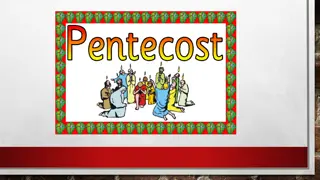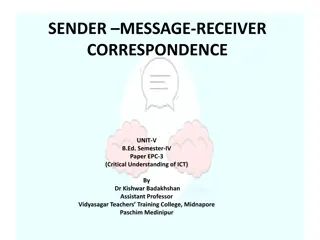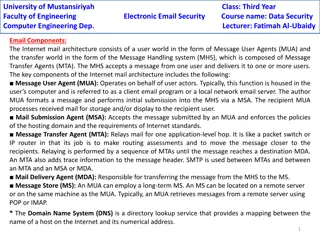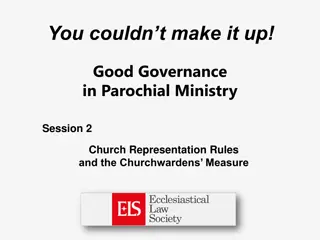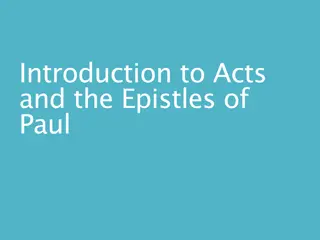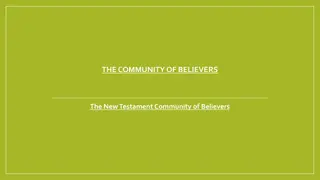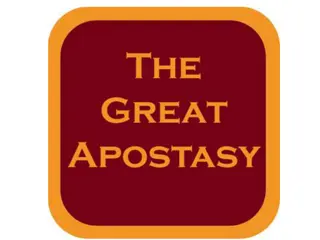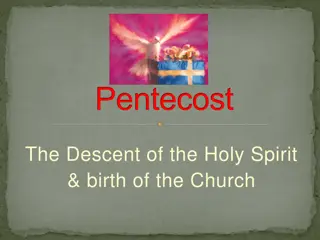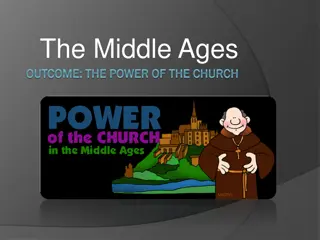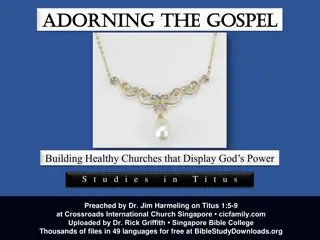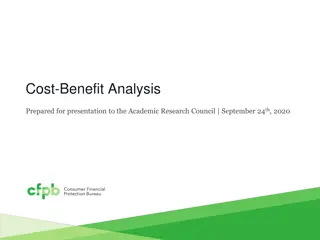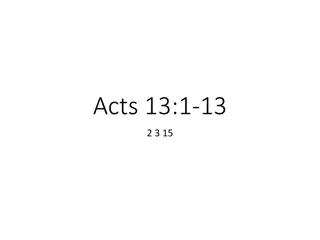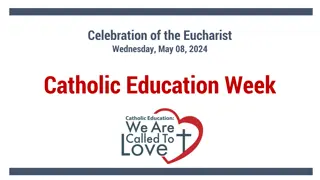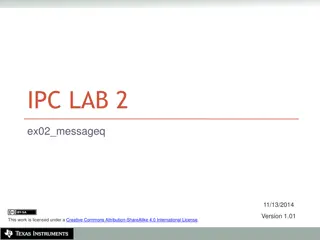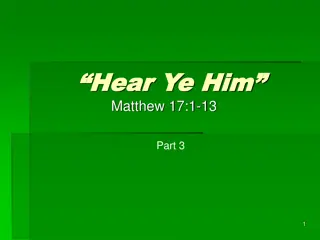Early Church Message and Format in Acts of the Apostles: Kerygmata by C. H. Dodd
The early church's message and format in Acts of the Apostles, particularly focusing on the kerygmata as elucidated by C. H. Dodd, with references to Acts 2:14-39 and 3:12-26. Explore the challenges to the kerygmata and the adaptation of the Christian message to various audiences. Additionally, insights into the significance of key sections like Acts 2:14-39 and Acts 3:12-26 are discussed, shedding light on the central preaching and explanations within these passages, all while delving into the scholarly contributions of C. H. Dodd.
Download Presentation

Please find below an Image/Link to download the presentation.
The content on the website is provided AS IS for your information and personal use only. It may not be sold, licensed, or shared on other websites without obtaining consent from the author.If you encounter any issues during the download, it is possible that the publisher has removed the file from their server.
You are allowed to download the files provided on this website for personal or commercial use, subject to the condition that they are used lawfully. All files are the property of their respective owners.
The content on the website is provided AS IS for your information and personal use only. It may not be sold, licensed, or shared on other websites without obtaining consent from the author.
E N D
Presentation Transcript
1 E The early church (in Acts of the Apostles): Its message and format: the kerygmata as presented by C. H. Dodd, with reference to Acts 2:14-39; 3:12-26. The challenges to the kerygmata (with reference to the historical value of the speeches in Acts and the work of Rudolf Bultmann). The adapting of the Christian message to suit the audience.
Its message and format: the kerygmata as presented by C. H. Dodd, with reference to Acts 2:14-39; 3:12-26. 1. Read page 1 2. Identify five key points about the Acts of the Apostles 3. Write them in your notes or page 16 of the booklet
Its message and format: the kerygmata as presented by C. H. Dodd, with reference to Acts 2:14-39; 3:12-26. Read page 2 What is the pattern of the kerygma use the pictures to help
Acts 2:14-39 Can you spot the kerygma in this section of Acts? Complete the activity on page 4 What is the central preaching/kerygma found in Acts 2:14-39? God had shown them, through the signs and wonders that Jesus did among them, that he was the Messiah. E.g. Nevertheless, they were responsible for his crucifixion and death. How? However, God had raised him from the dead, as prophesied in Psalm 16:10. David, the reputed author of the psalms, had died; the resurrection of Jesus proves that he is greater than David. Why is this significant? The apostles are witnesses to the resurrection, for they had seen the risen Jesus. All this proves that God has made this Jesus whom the Jews crucified both Lord and Messiah.
Acts 3:12-26. Notes and explanations What is the Kerygma? Peter makes the following points: The healing was not accomplished through the apostles own power; this was God glorifying his servant, Jesus, whom the Jews had rejected and killed. God had raised him from the dead, and the apostles were witnesses to this. It is through faith in Jesus name that the lame man was healed. The Jews acted in ignorance, but God had indicated through his prophets that the Messiah would suffer, and this had been fulfilled. The Jews were the prophets descendants, inheritors of God s promise to Abraham that his children would be blessed.
C. H. Dodd C. H. Dodd Charles Harold Dodd (April 7, 1884 - September 25, 1973) was a New Testament scholar. He was known for promoting realized eschatology (end times), the belief that Jesus' references to the kingdom of God meant a present rather than future reality. The first major book published by Dodd was The Authority of the Bible (1928). It in he proposed that not only was the crucifixion an historical event, but it was one which was to re-shape the Western world and, through a knock-on effect, every other culture without exception. This, thought Dodd, makes Christianity a uniquely historical religion. Dodd emphases the necessity of historical research. If, he said, Christianity claimed to be based upon a revelation in history then there is no alternative to historical research. Those who had demonstrated that Christianity has borrowed certain ideas and images from other religions were acknowledged. So also were the form critics, who analytic methods had attempted to recover the original Christian sources. Dodd maintained that the Christian faith was nevertheless new in essence.
Dodd - The historical importance of Acts Dodd claimed (a) that we have enough residue of historical fact for an in-depth understanding of the main elements of Jesus life and teaching; and (b) that for the rest we can safely rely on the primitive and relatively constant kerygma of the early Christian communities. He wrote: "The Gospel is not a statement of the general truths of religion, but an interpretation of that which once happened . Dodd's point is that a powerful kerygma depends upon the historical existence of a powerful and influential Jesus.
The challenges to the kerygmata (with reference to the historical value of the speeches in Acts and the work of Rudolf Bultmann). Recap What is the kerygmata in the speeches in Acts?
The challenges to the kerygmata (with reference to the historical value of the speeches in Acts and the work of Rudolf Bultmann). AO2 Any arguments in defence of the historical value of the speeches in Acts. Luke saw some of Paul s speeches The speeches refer to the OT not Luke s usual style The recorded speeches are summaries The speeches are similar to the speakers epistles Challenges to the historical value of the speeches in Acts Read page 6 The speeches represents Luke s own views popular at the time The speeches don t fit the story The speeches are too structured to be off the cuff they follow a pattern The language used wasn t used by Christians at the time the intended audience of the speeches was the later readers not Peter s audience
1 E. The challenges to the kerygmata (with reference to the historical value of the speeches in Acts and the work of Rudolf Bultmann). Listen to the video Bultmann lecture 1. Why does he think the liberal Christian tradition is inadequate? 2. What does eschatological mean? 3. What key theme comes out of Bultmann s theory? 4. What does he believe is the most important part of the story of Jesus? 5. Why is this different to other Christians? 6. What does Bultmann mean by myth? Express the non objective in 7. Put simply, what does he mean by demythologising? 8. What ideas have changed since the Biblical writers were alive? 9. According to Bultmann, what is the point of demythologising? 10. Why did so many Christians object to Bultmann sdemythologising? throwing the baby out with the bath water. Extension listen to this interview about Bultmann https://www.youtube.com/watch?v=_brHQS6zQVw
The challenges to the kerygmata (with reference to the historical value of the speeches in Acts and the work of Rudolf Bultmann). Read pages 8, 9 and 10 Create a mind map of Bultmann s key ideas Bultmann defines the kerygma as the message of God s decisive act in Christ . Bultmann s ideas about what demythologising actually is Link each idea to the kerygmata found in the speeches in Acts Bultmann claimed the Jesus of history was less important than the Christ of faith I do indeed think we can know almost nothing concerning the life and personality of Jesus . . . The only thing we can know with certainty about Jesus is the kerygma or preaching of Jesus followers after his death The early church was inspired by the powerful ongoing experience of the risen Christ. It is their reflections on this which are the basis and cornerstone of Christian faith rather than the historical Jesus, of whom very little can be known.
Support for Bultmann Bultmann s challenge to the Kergymata Opposition to Bultmann Kergyma God s decisive act in Christ Needs to be demythologised Rejects It was impossible for death to keep its hold on him Acts 2 Historical Jesus of limited value can be misleading challenges the message of Acts find supporting evidence Christians shouldn t look for proof of the message I do indeed think we can know almost nothing concerning the life and personality of Jesus . . . Not supernatural element Holy Spirit The gospel helps Christians Importance of moral teachings and Kingdom of Heaven in this life Christians make the mistake of making Jesus similar to us
Challenges to the Kerygma However, recent research into the social background of New Testament times is casts considerable doubt on the validity of the kerygma as a uniform body of doctrine. Early Christian teaching turns out not to have been as stable as Dodd's thesis requires. First, Palestine before the year 70 and the destruction of the Jerusalem temple was in a state of great flux. There were many competing versions of the kerygma - as the gospels and the non- canonical gospels reveal. Second, the Roman Empire was far less uniform than is the modern nation-state which we now take as the norm. Many forms of religion co-existed in the Empire, just as did many varieties of Judaism. In short, there was never such a thing as the kerygma. Rather, there were many types of kerygma.
The adapting of the Christian message to suit the audience. To be completed next year They should also have a basic understanding of the cultural context of Peter s proclamation in Acts. There should be an awareness both of the Jewish and the non-Jewish setting of the proclamation and how the Christian message was adapted to suit the different audiences. Many of Jesus early followers were Jewish Luke was a Gentile - Luke s Gospel and Acts encourage Gentiles to believe the message of Jesus Acts and Gospels written to promote the Christian message
Within this section, candidates should be introduced to the notion of kerygmata (proclamation) in the scholarly work of C. H. Dodd and Rudolf Bultmann. They should possess an understanding of Bultmann's distinction between Jesus message concerning the Kingdom of God and the proclamation of the early Church about Jesus. A grasp of the central themes of Acts 2:14-39; 3:12-26 is also required, including Jesus Sonship, his sacrificial death and his ascension to heaven. Candidates should be familiar with Dodd s contention that Christian proclamation found in the Gospel is a unique genre (neither biography, history nor theology) but containing elements of all of these. They should also have a basic understanding of the cultural context of Peter s proclamation in Acts. There should be an awareness both of the Jewish and the non-Jewish setting of the proclamation and how the Christian message was adapted to suit the different audiences.
The extent to which the kerygmata (within the areas of Acts studied) are of any value for Christians today. The kerygmata (within the areas of Acts studied) has value for Christians today. The kerygmata (within the areas of Acts studied) has no value for Christians today. Has value as is the inspired word of God Timothy God breathed Not historically accurate The second coming of Jesus hasn t occurred Not compatible with science Jesus miracles e.g. Value God can break the laws of nature omnipotent Not compatible with contemporary society modern Christians believe God is still active Can work today - Repent and be baptised Demythologising the Bible makes it acceptable to modern Christians - Bultmann demythologised Bible is worthless Conclusion Value for believers . . . If the Bible is the inspired word of God . . . Based on interpretation . . .
Whether the speeches in Acts have any historical value. Historical value No historical value Dodd Bultmann



